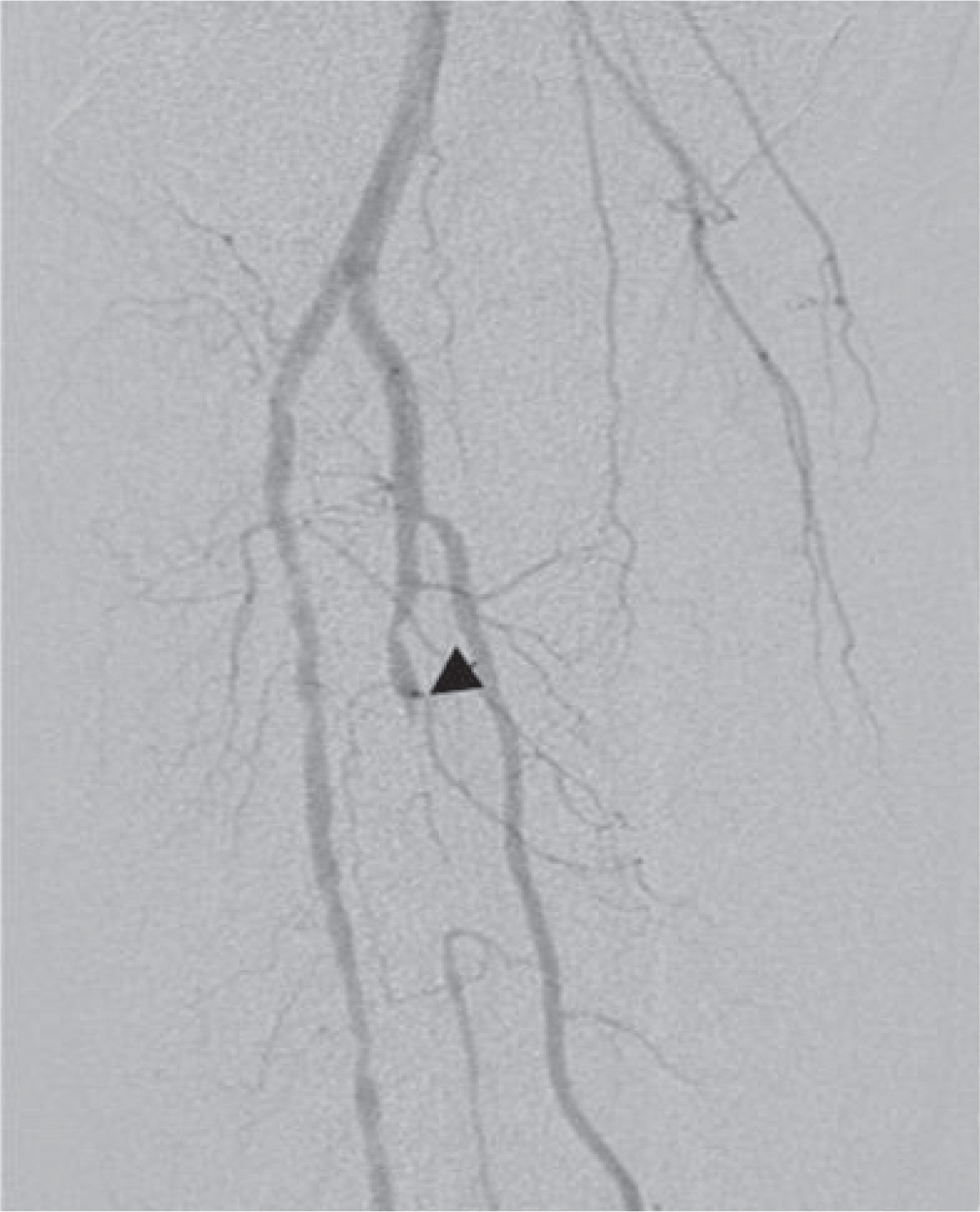J Korean Diabetes.
2011 Sep;12(3):174-177. 10.4093/jkd.2011.12.3.174.
A Case of Diabetic Foot Infection due to Leclercia adecarboxylata
- Affiliations
-
- 1Department of Internal Medicine, Eulji University College of Medicine, Eulji University Hospital, Daejeon, Korea. yhj822@medimail.co.kr
- 2Department of Labaratory Medicine, Eulji University College of Medicine, Eulji University Hospital, Daejeon, Korea.
- KMID: 2059846
- DOI: http://doi.org/10.4093/jkd.2011.12.3.174
Abstract
- Leclercia adecarboxylata is a motile, Gram-negative, facultative anaerobic bacillus of the Enterobacteriaceae family. L. adecarboxylata is an opportunistic human pathogen that phenotypically resembles Escherichia coli, although L. adecarboxylata has been rarely isolated from clinical specimens. Here we report a case of diabetic foot infection due to L. adecarboxylata, which has never been reported in Korea.
Keyword
Figure
Reference
-
1. Abbott CA, Carrington AL, Ashe H, Bath S, Every LC, Griffiths J, Hann AW, Hussein A, Jackson N, Johnson KE, Ryder CH, Torkington R, Van Ross ER, Whalley AM, Widdows P, Williamson S, Boulton AJ. North-West Diabetes Foot Care Study. The North-West Diabetes Foot Care Study: incidence of, and risk factors for, new diabetic foot ulceration in a community-based patient cohort. Diabet Med. 2002; 19:377–84.
Article2. Kim JM, Kim DY, Woo JT, Kim SW, Yang IM, Kim JW, Kim YS, Kim KW, Choi YK. A clinical study on the diabetic foot lesions. J Korean Diabetes Assoc. 1993; 17:387–94.3. Lipsky BA, Berendt AR, Deery HG, Embil JM, Joseph WS, Karchmer AW, LeFrock JL, Lew DP, Mader JT, Norden C, Tan JS. Infectious Diseases Society of America. Diagnosis and treatment of diabetic foot infections. Clin Infect Dis. 2004; 39:885–910.
Article4. Andrew JM, Boulton , VileiKyte L. Diabetic foot problems and their management around the world. Levin ME, O'Neal LW, editors. The diabetic foot. 6th ed.Philadelphia: Mosby Inc.;2001. p. 266.5. Seo YB, Noh JY, Huh JY, Lee J, Song JY, Han SK, Kim WJ, Cheong HJ. Diabetic foot infection: microbiologic analysis based on deep tissue biopsy. Infect Chemother. 2007; 39:237–42.6. Leclerc H. Etude biochimique d'enterobacteriaceae pigmenteés. Ann Inst Pasteur. 1962; 102:726–41.7. Tamura K, Sakazaki R, Kasako Y, Yoshizaki E. Leclercia adecarboxylata gen. nov., comb. nov., formerly known as Escherichia adecarboxylata. Curr Microbiol. 1986; 13:179–84.8. Lee W, Yi DY, Jung B, Huh JY, Kang MS, Hong SG, Hong SK. Two cases of independent infection by Leclercia adecarboxylata. Infect Chemother. 2009; 41:109–12.
Article9. Hwang HY, Jeong SH, Rim H, Kim MH, Jeong TJ, Choi BG. A case of Leclercia adecarboxylata isolated from dialysate in a patient with continuous ambulatory peritoneal dialysis. Korean J Clin Microbiol. 1998; 1:113–6.10. Lee HN, Park J, Kim HS, Park S, Chang JH, Chung WK, Lee HH, Seo YH, Kim S. Peritonitis due to Leclercia adecarboxylata in a patient receiving automated peritoneal dialysis. Korean J Nephrol. 2009; 28:681–4.11. Lee NY, Ki CS, Kang WK, Peck KR, Kim S, Song JH. Hickman catheter-associated bacteremia by Leclercia adecarboxylata and Escherichia hermannii: a case report. Korean J Infect Dis. 1999; 31:167–70.12. Temesgen Z, Toal DR, Cockerill FR 3rd. Leclercia adecarboxylata infections: case report and review. Clin Infect Dis. 1997; 25:79–81.13. Stock I, Burak S, Wiedemann B. Natural antimicrobial susceptibility patterns and biochemical profiles of Leclercia adecarboxylata strains. Clin Microbiol Infect. 2004; 10:724–33.
Article14. Woo PC, Cheung EY, Leung K, Yuen K. Identification by 16S ribosomal RNA gene sequencing of an Enterobacteriaceae species with ambiguous biochemical profile from a renal transplant recipient. Diagn Microbiol Infect Dis. 2001; 39:85–93.
Article15. Casey JI. Host defense and infections in diabetes mellitus. Rifkin K, Porte D, editors. Diabetes mellitus, theory and practice. 4th ed.New York: Elsevier;1990. p. 617–9.16. Wilsom RM. Infection and diabetes mellitus. Pickup J, Williams. G, editors. Textbook of diabetes mellitus. Cambridge: Blackwell Science;1991. p. 813–9.17. Delamaire M, Maugendre D, Moreno M, Le Goff MC, Allannic H, Genetet B. Impaired leucocyte functions in diabetic patients. Diabet Med. 1997; 14:29–34.
Article18. Mazzariol A, Zuliani J, Fontana R, Cornaglia G. Isolation from blood culture of a Leclercia adecarboxylata strain producing an SHV-12 extended-spectrum beta-lactamase. J Clin Microbiol. 2003; 41:1738–9.
- Full Text Links
- Actions
-
Cited
- CITED
-
- Close
- Share
- Similar articles
-
- Two Cases of Independent Infection by Leclercia adecarboxylata
- A Case of Leclercia adecarboxylata Infection Following Wood Stick Injury
- A Case of Corneal Ulcer Caused by Leclercia Adecarboxylata
- Pseudobacteremic Outbreak of Leclercia adecarboxylata and Pseudomons aeruginosa Related to Contaminated Saline Cotton
- Peritonitis due to Leclercia adecarboxylata in a Patient Receiving Automated Peritoneal Dialysis


